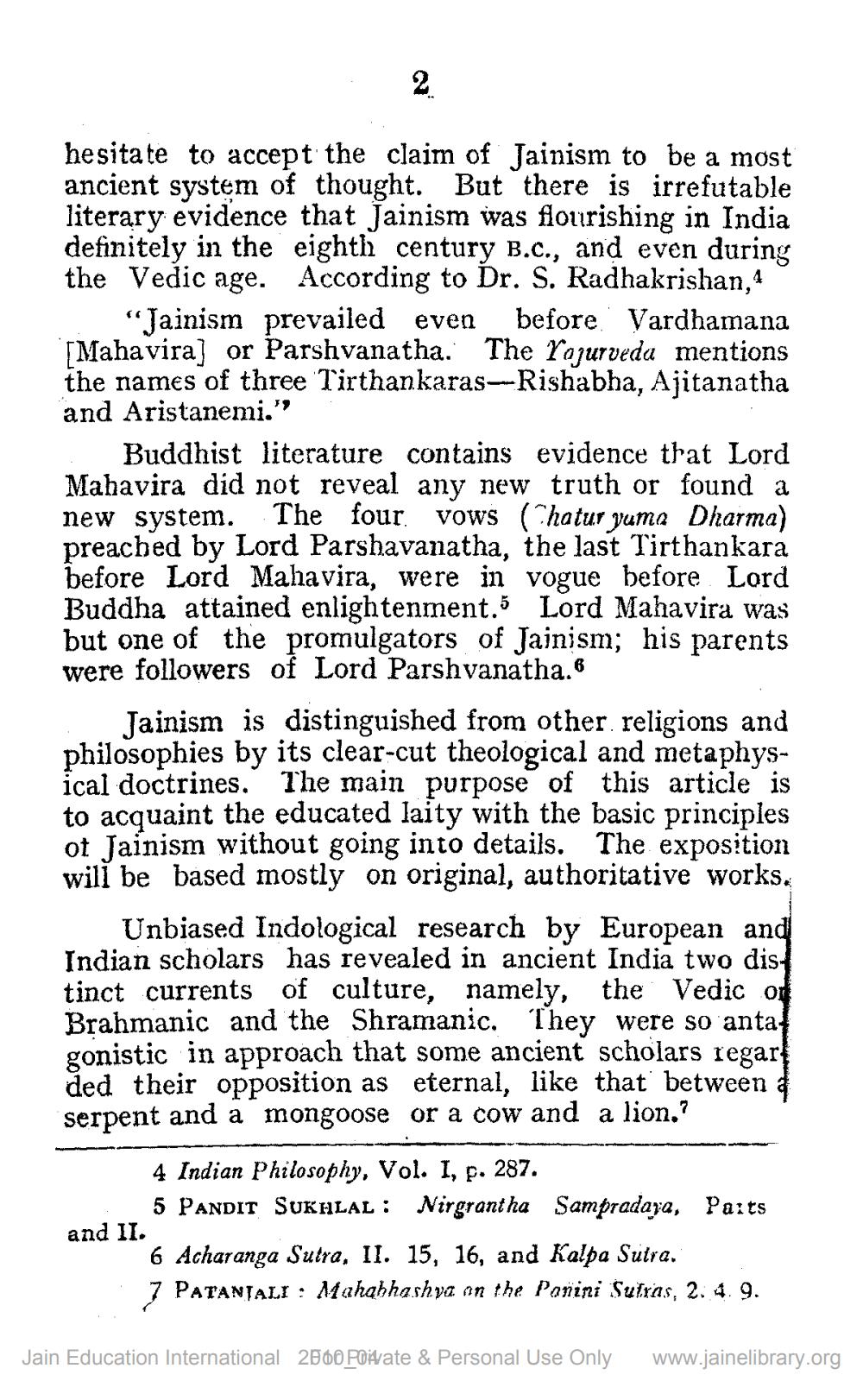Book Title: Fundamental of Jainism Author(s): Prithviraj Jain Publisher: Prithviraj Jain View full book textPage 4
________________ 2 hesitate to accept the claim of Jainism to be a most ancient system of thought. But there is irrefutable literary evidence that Jainism was flourishing in India definitely in the eighth century B.c., and even during the Vedic age. According to Dr. S. Radhakrishan, 4 "Jainism prevailed even before. Vardhamana Mahavira] or Parshvanatha. The Yajurveda mentions the names of three Tirthankaras-Rishabha, Ajitanatha and Aristanemi." Buddhist literature contains evidence that Lord Mahavira did not reveal any new truth or found a new system. The four. Vows (Chatur yuma Dharma) preached by Lord Parshavanatha, the last Tirthankara before Lord Mahavira, were in vogue before Lord Buddha attained enlightenment. Lord Mahavira was but one of the promulgators of Jainism; his parents were followers of Lord Parshvanatha.6 Tainism is distinguished from other religions and philosophies by its clear-cut theological and metaphysical doctrines. The main purpose of this article is to acquaint the educated laity with the basic principles of Jainism without going into details. The exposition will be based mostly on original, authoritative works. Unbiased Indological research by European and Indian scholars has revealed in ancient India two dis tinct currents of culture, namely, the Vedic od Brahmanic and the Shramanic. They were so anta gonistic in approach that some ancient scholars regar ded their opposition as eternal, like that between a serpent and a mongoose or a cow and a lion." 4 Indian Philosophy, Vol. I, p. 287. 5 PANDIT SUKHLAL: Nirgrantha Sampradaya, Parts and II. 6 Acharanga Sutra, II. 15, 16, and Kalpa Sutra. 7 PATANJALI : Mahabhashya on the Panini Sulras, 2.4.9. Jain Education International 2500 Polrate & Personal Use Only www.jainelibrary.orgPage Navigation
1 2 3 4 5 6 7 8 9 10 11 12 13 14 15 16 17 18 19 20
